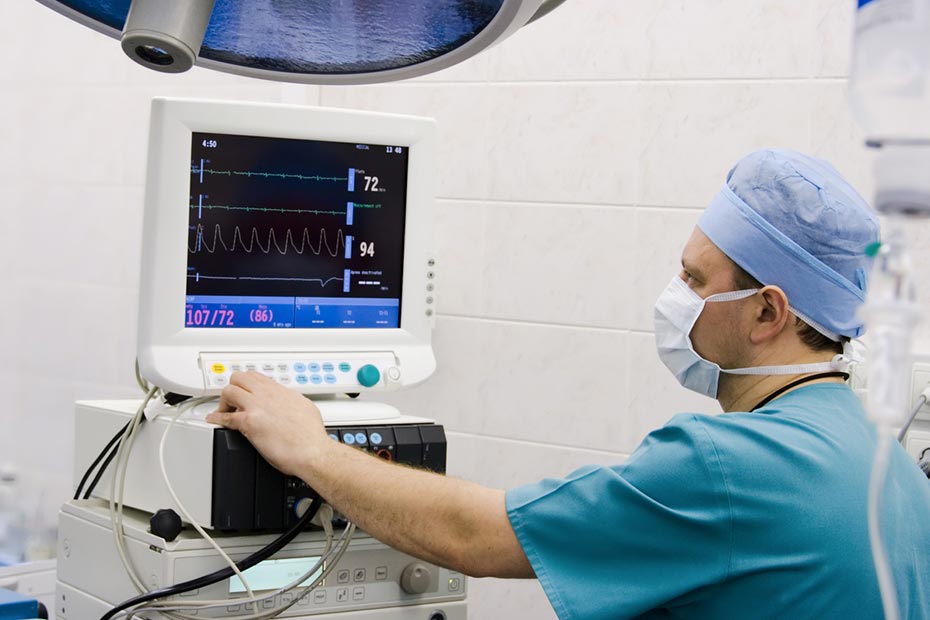The following competitive lists are based on the 2022 Canadian medical graduates’ first choice discipline compared to availability according to the 2022 CaRMS Forum findings.
Disciplines with a lower position over the applicant’s first choice discipline ratio would mean there is less supply than demand (a.k.a. these disciplines are more competitive to match), and vice versa.
For easy reference, the following lists also include the various specialty profiles and their average gross clinical payments in 2020-2021. (Source: Canadian Medical Association & Canadian Institute for Health Information)
The 5 most competitive disciplines to match in 2022
1. Plastic Surgery
Plastic surgery includes the management of major burns, reconstruction of congenital malformations, cosmetic surgery and other minor surgical procedures. Many plastic surgeons concentrate on cosmetic procedures; however, their goal is often to improve appearances and restore function. Plastic surgeons treat various clinical disorders, including congenital and developmental problems, trauma, cancer and degenerative diseases.
- Average gross pay (2020-21): $504,704
- Required training: 5 years (2 years of foundational training, 3 years of progressive senior residency training)
- Average hours per week: 59.8
- Professional satisfaction: 79%
- Work-life balance satisfaction: 47%
- Additional resources: Canadian Society of Plastic Surgeons
2. Vascular Surgery
Vascular (Cardiac) Surgery is the area of surgery that deals with diseases of the pericardium, heart and vessels. Procedures that are performed include coronary artery bypass, valve repair or replacement, heart transplantation, aorta replacement, pulmonary thromboendarterectomy and procedures to correct congenital abnormalities. It is a demanding, technical specialty that is very diverse. It exposes practitioners to various medical problems and requires them to interact often with other physicians, including the operating room team of specialized nurses, technicians and anesthetists.
- Average gross pay (2020-21): $662,243
- Required training: 6 years of approved residency training in core general surgery, cardiac, vascular and thoracic surgery.
- Average hours per week: 69.6
- Professional satisfaction: 53%
- Work-life balance satisfaction: 33%
- Additional resources: Canadian Society for Vascular Surgery
3. Ophthalmology
Ophthalmology specializes in the screening, diagnosis and management of optical, medical and surgical disorders and diseases of the eye. Ophthalmologists are the leaders of the eye care team, which often includes orthoptists, ophthalmic technicians, nurses and optometrists.
- Average gross pay (2020-21): $855,664
- Required training: 5 years (1-year basic clinical training, plus 4 years of Royal College-approved residency in ophthalmology)
- Average hours per week: 48.4
- Professional satisfaction: 87%
- Work-life balance satisfaction: 68%
- Additional resources: Canadian Ophthalmological Society
4. Dermatology
Dermatology is a diverse specialty that deals with benign and malignant skin disorders. Dermatologists perform a variety of procedural work, and they also have expertise in the prevention of skin disease and skin cancers.
- Average gross pay (2020-21): $458,682
- Required training: 5 years (2 years of basic clinical training plus 3 years of Royal College-approved residency training in dermatology).
- Average hours per week: 49.8
- Professional satisfaction: 68%
- Work-life balance satisfaction: 37%
- Additional resources: Canadian Dermatology Association
5. Paediatrics
Paediatricians focus on the physical, emotional and social health of neonates, infants, children, adolescents and young adults. This specialty deals with health promotion and The prevention, detection and management of physical, behavioural, developmental, mental/emotional, environmental and social problems that affect children.
- Average gross pay (2020-21): $358,223
- Required training: 4 years (including 3 years of an approved residency in pediatrics)
- Average hours per week: 48.6
- Professional satisfaction: 80%
- Work-life balance satisfaction: 50%
- Additional resources: Canadian Paediatric Society
The 5 least competitive specialties to match in 2022
1. Hematological Pathology & General/Clinical Pathology
Hematological Pathology is concerned with the study, investigation, diagnosis and therapeutic monitoring of disorders of blood, blood-forming elements, hemostasis and immune function in adults and children. The specialty also encompasses the direction and supervision of transfusion medicine services at hospitals and blood centres.
- Average gross pay (2017-18): $437,0001
- Required training: 4 years approved residency training, successful completion of certification exam in Hematological Pathology
- Average hours per week: 55.1
- Professional satisfaction: 70%
- Work-life balance satisfaction: 42%
- Additional resources: Canadian Association of Pathologists
General pathology specializes in laboratory investigation focused on diseases’ causes, manifestations and diagnoses. A pathologist may act as a consultant for clinical physicians, and their advice is often sought in treating patients. General/clinical pathology encompasses autopsy, surgical pathology, anatomical pathology, cytology and medical biochemistry, hematological pathology, medical microbiology and transfusion medicine.
- Average gross payment: $336,5322
- Required training: 5 (1-year basic clinical training, 2 years Royal College-approved training in anatomical pathology, 6 months specialty training, 6 months laboratory experience)
- Average hours per week: 48.3
- Professional satisfaction: 76%
- Work-life balance satisfaction: 53%
- Additional resources: Canadian Association of Pathologists
2. Neuropathology
Neuropathology studies diseases in the central and peripheral nervous systems and skeletal muscles. It is a subspecialty of anatomical pathology, the branch of medicine concerned with studying the morphologic aspects of diseases. Neuropathologists diagnose tumours, inflammatory disorders and infectors, and they are increasingly becoming part of research teams studying neurological diseases, including Alzheimer’s, Huntington’s and Parkinson’s.
- Average gross payment (2021): 281,1823
- Years of residency training: 5 years (1 year of basic clinical training, 3 years of residency training, 3 months’ training in cytopathology, training in forensic pathology and pediatric pathology, 1 year of approved residency)
- Average hours per week: 52.5
- Professional satisfaction: 68%
- Work-life balance satisfaction: 52%
- Additional resources: Canadian Association of Neuropathologists; Canadian Association of Pathologists
3. Medical Microbiology
The Medical Microbiology and Infectious Disease specialty focuses on diagnosing and treating infectious diseases and human illnesses caused by microorganisms in any body region. The specialty consists of four major spheres: clinical consultations, infection control programs, public health and laboratory administration.
- Average gross payment (2017/18): $437,000
- Required training: 5 years (1-year basic clinical training, 2 years diagnostic laboratory residency, 2 years approved residency)
- Average hours per week: 55
- Professional satisfaction: 73%
- Work-life balance satisfaction: 48%
- Additional resources: Association of Medical Microbiology and Infectious Disease Canada.
4. Anatomical Pathology
Anatomical pathology is concerned with the study of the morphologic aspects of diseases. Anatomical pathologists specialize in examining tissue and organ samples removed by needle aspiration, surgical procedures or autopsy. These pathologists are responsible for diagnosing diseased tissue and investigating the mechanisms and development of disease.
- Average gross payment: $312,2254
- Required training: 5 years (1 year of basic clinical training; 3 years of approved residency training in anatomical pathology; a minimum of 3 months training in cytopathology; and training in forensic pathology and pediatric pathology. 1 year approved residency.)
- Average hours per week: 52.5
- Professional satisfaction: 68%
- Work-life balance satisfaction: 52%
- Additional resources: Canadian Association of Pathologists
5. Family Medicine (General Practitioners)
Family medicine is the main primary care medical specialty in Canada. It focuses care on the individual within the context of the family and the community. Family physicians (refers to family physicians and general practitioners) deliver services across the entire spectrum of care, regardless of patient age, sex or condition.
We have included Family Medicine in this list because new research shows a serious shortage of family doctors in Canada, with more than six million people currently without access to a family doctor. Statistics Canada reported in 2019 that around 4.6 million Canadians lacked a primary care provider. But the pressure of the pandemic and mass healthcare worker burnout added pressure on the wider healthcare system, and family physicians are facing a particularly acute staff shortage.
- Average gross payment (2020/21): $346,114
- Required training: 2 years (includes experiences in family practice settings; general surgery; internal medicine; pediatrics; obstetrics/gynaecology; psychiatry, and emergency medicine)
- Average hours per week: 47.9
- Professional satisfaction: 71%
- Work-life balance satisfaction: 48%
- Additional resources: The College of Family Physicians of Canada
Watch the 2022 CaRMS Forum presentation or download their presentation deck for additional data, including the top 10 discipline choices for the past 3 years; the supply and demand ratio for key disciplines.
1 Canadian Medical Association
2 Statistics Canada; retrieved Nov. 2022
3 Economic Research Institute; retrieved Nov. 2022
4 Talent.com; retrieved Nov. 2022
Related stories:
- What to Consider When Choosing a Medical Specialty
- How To Write a Strong Residency Personal Statement
- Residents Share Their Secrets for Getting Through CaRMS
- Does Research Experience Help When Applying for Medical Residencies?
This article is intended as general information only and is not to be relied upon as constituting legal, financial or other professional advice. A professional advisor should be consulted regarding your specific situation. Information presented is believed to be factual and up-to-date but we do not guarantee its accuracy and it should not be regarded as a complete analysis of the subjects discussed. All expressions of opinion reflect the judgment of the authors as of the date of publication and are subject to change. No endorsement of any third parties or their advice, opinions, information, products or services is expressly given or implied by Royal Bank of Canada or any of its affiliates.



















